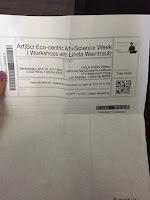 |
| UCLA Sex Squad Logo |
As noted in her piece "Toward a Third Culture: Being in between," author Victora Versa talks about how art and science are not far from coming together, but "it is in the practice of art that the freedom lies to make assertions beyond the rational and beyond the necessary methodology of proving a thesis." This practice of art is something I deal with almost every time I step into Kaufman Hall, the World Arts and Cultures building. Being in what is considered the most north campus major causes me and my peers to be stereotyped as being more on the art side of the two cultures. This idea of stereotypes relates to Lecture part II, which proves that the education system has reinforced these stereotypes of the mad artist, something that all WAC majors are viewed as being from the outside majors. As discussed by CP Snow, the misinterpretations that both groups place on each other can slow down the creation of the Third culture, which means to bridge the gap between science and art. However, my classes have proved to me that science is an important aspect of art. I saw this especially in one of my classes called Art and Global Health, which
 |
| http://artsology.com/blog/2014/01/artist-stereotypes/ |
focused on trying to help global health problems, like HIV and mental illness, by using different forms of art. For example, in this class, we talked about the UCLA Sex Squad, which is a WAC program that goes to high schools around Los Angeles to teach students about sexual health using performance art. In our final project, we had to create our own art intervention program which included researching a particular health group and then using creative art to help this target group. Through this project, I, like Stephan Wilson, believe that "some artists believe the most powerful response is to become researchers themselves." By researching our target groups, artists open up more opportunities to create personal art pieces that use their findings, which in turn proves that art and science together are the strongest method to help any target group.
 |
Kaufman Hall Stage with dancers
http://labibse.com/projects_renovation/ucla-kaufman-hall/ |
REFERENCES
Wilson, Stephen D. “Myths and Confusions in Thinking about Art/Science/Technology.” College Art Association Meetings. New York, New York, 2000. Print
Snow, C. P. The Two Cultures and the Scientific Revolution. New York: Cambridge UP, 1959. Print.
Vesna, Victoria. "Toward a Third Culture: Being In Between." Leonardo. 34 (2001): 121-125. Print.





Comments
Post a Comment